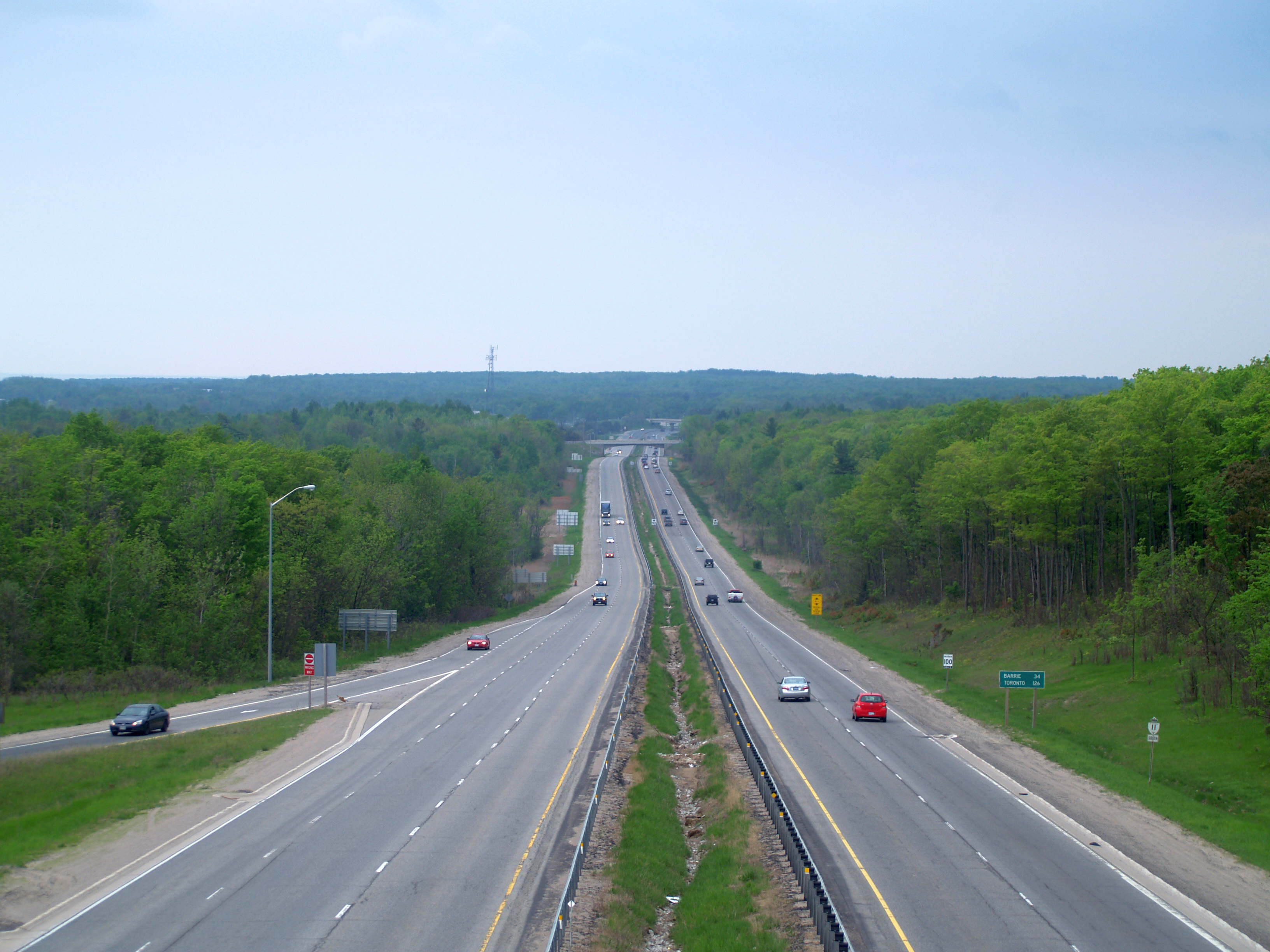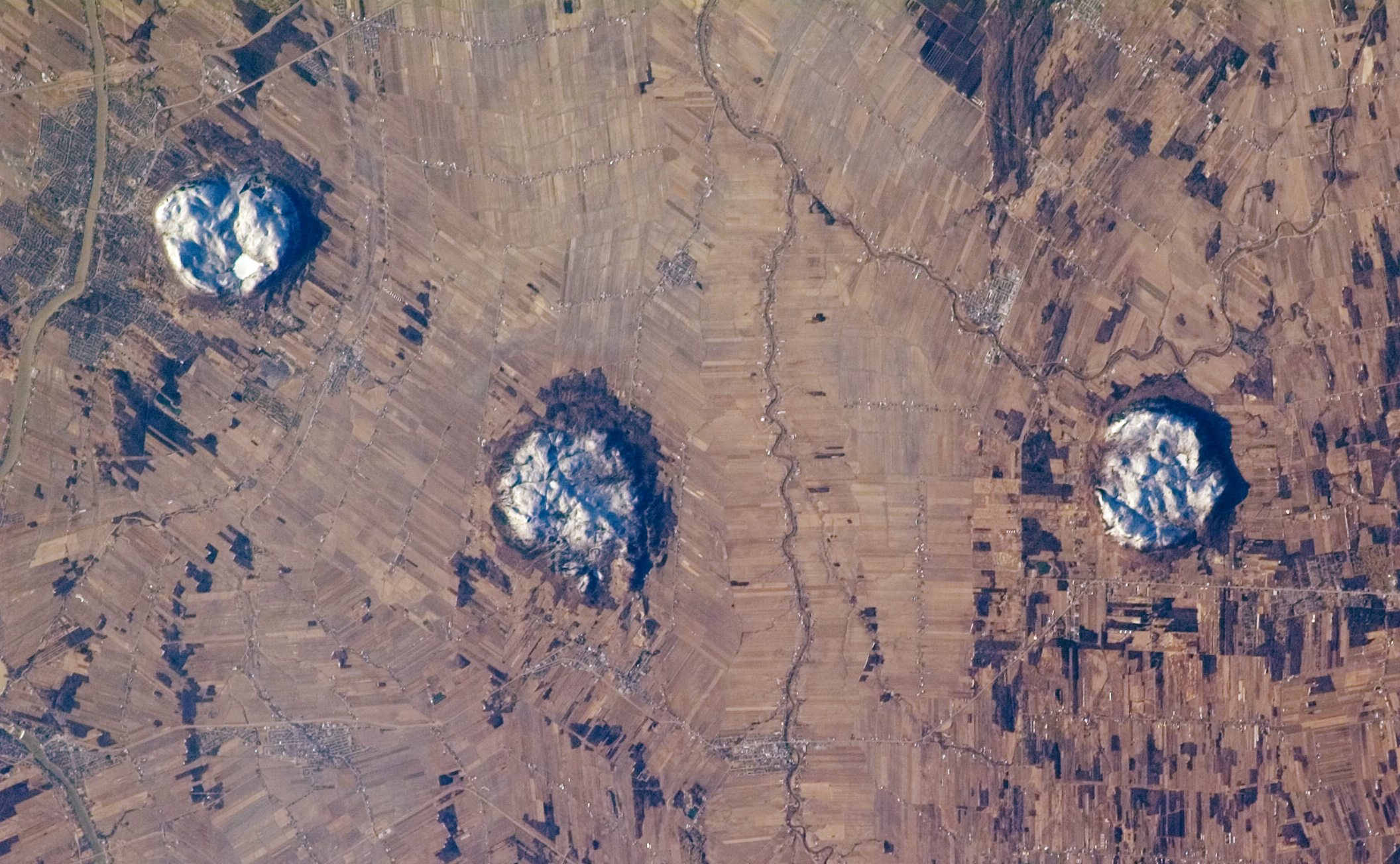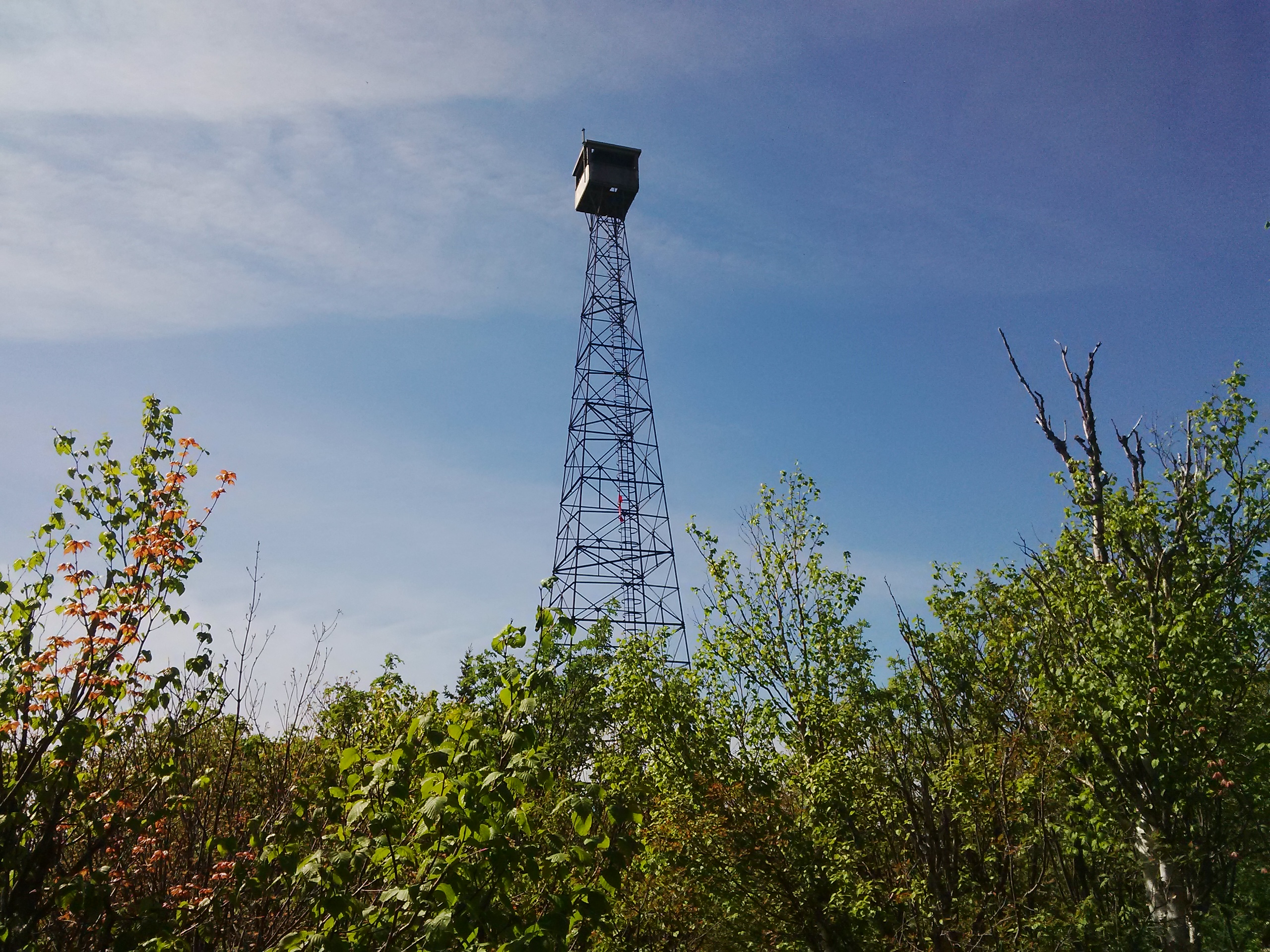|
Ontario Highway 560
Secondary Highway 560, commonly referred to as Highway 560, is a provincially maintained secondary highway in the northern section of the Canadian province of Ontario. It begins in the west at an intersection with Highway 144 and the Sultan Industrial Road and proceeds east to Highway 11 at Englehart. Highway560 was established, along with many of the secondary highways in Ontario, in 1956. It was extended westward to Ontario Highway 144 in 1965. Aside from minor realignments along its isolated route, the route has remained unchanged since then. Route description Highway560 is a remote route through some of the most isolated parts of Northeastern Ontario, spanning between Highway144, where the road continues west as the Sultan Industrial Road, and Highway11 at Englehart. There are few gas stations and services located along the route, which is heavily travelled by logging trucks; warning signs are posted along the route as a reminder of this hazard. The fir ... [...More Info...] [...Related Items...] OR: [Wikipedia] [Google] [Baidu] |
Ministry Of Transportation Of Ontario
The Ministry of Transportation (MTO) is the provincial ministry of the Government of Ontario that is responsible for transport infrastructure and related law in Ontario. The ministry traces its roots back over a century to the 1890s, when the province began training Provincial Road Building Instructors. In 1916, the Department of Public Highways of Ontario (DPHO) was formed and tasked with establishing a network of provincial highways. The first was designated in 1918, and by the summer of 1925, sixteen highways were numbered. In the mid-1920s, a new Department of Northern Development (DND) was created to manage infrastructure improvements in northern Ontario; it merged with the Department of Highways of Ontario (DHO) on April 1, 1937. In 1971, the Department of Highways took on responsibility for Communications and in 1972 was reorganized as the Ministry of Transportation and Communications (MTC), which then became the Ministry of Transportation in 1987. Overview The MTO is in ch ... [...More Info...] [...Related Items...] OR: [Wikipedia] [Google] [Baidu] |
Ontario Highway 11
King's Highway 11, commonly referred to as Highway 11, is a Ontario Provincial Highway Network, provincially maintained highway in the Provinces and territories of Canada, Canadian province of Ontario. At , it is the second longest highway in the province, following Ontario Highway 17, Highway 17. Highway11 begins at Ontario Highway 400, Highway 400 in Barrie, and arches through northern Ontario to the Ontario–Minnesota border at Rainy River, Ontario, Rainy River via Thunder Bay; the road continues as Minnesota State Highway 72 across the Baudette–Rainy River International Bridge. North and west of North Bay, Ontario, North Bay (as well as for a short distance through Orillia), Highway11 forms part of the Trans-Canada Highway. The highway is also part of MOM's Way between Thunder Bay and Rainy River. The original section of Highway11 along Yonge Street was colloquially known as "Main Street Ontario", and was one of the first roads in what would later become Onta ... [...More Info...] [...Related Items...] OR: [Wikipedia] [Google] [Baidu] |
Ottawa-Bonnechere Graben
The Ottawa-Bonnechere Graben (also known as the Ottawa Graben) is a geological structure that coincides with a wide topographic depression extending from near Montréal through Ottawa. It is part of the Saint Lawrence rift system that also includes the seismically active Saguenay graben. This rift valley was formed when the Earth's crust moved downward about a kilometre between two major fault zones known as the Mattawa and Petawawa faults. Geography The Ottawa-Bonnechere Graben measures about , running from the Montreal area on the east to near Sudbury and Lake Nipissing on the west. On the east, it joins the Saint Lawrence rift system, a half-graben which extends more than 1000 km along the Saint Lawrence River valley and links the Ottawa and Saguenay Graben. The segment of the Ottawa-Bonnechere Graben west of Ottawa was the first to be recognized as a graben. Since then, it has been traced west to Lake Nipissing, and northwestwards from the confluence of the Mattawa a ... [...More Info...] [...Related Items...] OR: [Wikipedia] [Google] [Baidu] |
Concurrency (road)
A concurrency in a road network is an instance of one physical roadway bearing two or more different route numbers. When two roadways share the same right-of-way, it is sometimes called a common section or commons. Other terminology for a concurrency includes overlap, coincidence, duplex (two concurrent routes), triplex (three concurrent routes), multiplex (any number of concurrent routes), dual routing or triple routing. Concurrent numbering can become very common in jurisdictions that allow it. Where multiple routes must pass between a single mountain crossing or over a bridge, or through a major city, it is often economically and practically advantageous for them all to be accommodated on a single physical roadway. In some jurisdictions, however, concurrent numbering is avoided by posting only one route number on highway signs; these routes disappear at the start of the concurrency and reappear when it ends. However, any route that becomes unsigned in the middle of the concurren ... [...More Info...] [...Related Items...] OR: [Wikipedia] [Google] [Baidu] |
Ontario Highway 65
King's Highway 65, commonly referred to as Highway 65, is a provincially maintained highway in the Canadian province of Ontario. The route begins at Highway 66 and travels southeast to the Quebec border. At its midpoint, the route is concurrent with Highway 11. Highway 65 was assumed in 1937 following the merger of the Department of Northern Development (DND) with the Department of Highways (DHO). It initially connected Matachewan with Highway 11 at New Liskeard, but was extended east to the Quebec border in 1956. The route has remained unchanged since. Route description Highway 65 travels from Highway 66 at a junction east of Matachewan, southeast to New Liskeard then northeast to the Quebec provincial border. The total length of Highway 65 is . With the exception of the community of Elk Lake, the section of the route between Highway 66 and Highway 11 passes through a remote and sparsely populated wilderness. The route becomes concurrent ... [...More Info...] [...Related Items...] OR: [Wikipedia] [Google] [Baidu] |
Ishpatina Ridge
Ishpatina Ridge is the highest point of land in the Canadian province of Ontario, at an estimated above sea level. Ishpatina Ridge rises approximately above the immediate area. It was only truly recognized as Ontario's highest point after topographical mapping by the Government of Canada revealed this fact in the 1970s. Before then, the more popular Maple Mountain was thought to be higher. The ridge lies in Lady Evelyn-Smoothwater Provincial Park. Due to its remote location, Ishpatina Ridge is a challenge to reach. The closest major highway, Highway 560, is more than 30 km north. There are a few logging roads and trails in the remote area, but they are difficult to travel in poor weather. The most popular approach route to Ishpatina is by canoe/portage via a logging road to the south out of the town of Capreol north of Sudbury. While a northern route exists (out of Gowganda, the nearest community), there are numerous portages making it particularly onerous. This rou ... [...More Info...] [...Related Items...] OR: [Wikipedia] [Google] [Baidu] |
West Montreal River Provincial Park
West or Occident is one of the four cardinal directions or points of the compass. It is the opposite direction from east and is the direction in which the Sun sets on the Earth. Etymology The word "west" is a Germanic word passed into some Romance languages (''ouest'' in French, ''oest'' in Catalan, ''ovest'' in Italian, ''oeste'' in Spanish and Portuguese). As in other languages, the word formation stems from the fact that west is the direction of the setting sun in the evening: 'west' derives from the Indo-European root ''*wes'' reduced from ''*wes-pero'' 'evening, night', cognate with Ancient Greek ἕσπερος hesperos 'evening; evening star; western' and Latin vesper 'evening; west'. Examples of the same formation in other languages include Latin occidens 'west' from occidō 'to go down, to set' and Hebrew מַעֲרָב maarav 'west' from עֶרֶב erev 'evening'. Navigation To go west using a compass for navigation (in a place where magnetic north is the same dire ... [...More Info...] [...Related Items...] OR: [Wikipedia] [Google] [Baidu] |
Gowganda
Gowganda is a Dispersed Rural Community and unincorporated place in geographic Nicol Township, Timiskaming District, in northeastern Ontario, Canada. It is at the outlet of the Montreal River from Lake Gowganda, and is on Ontario Highway 560 Secondary Highway 560, commonly referred to as Highway 560, is a Highways in Ontario#Secondary, provincially maintained secondary highway in the Northern Ontario, northern section of the Canada, Canadian province of Ontario. It begins in the west .... References External links Gowgandaprofile at the James Bay Frontier Travel Association North Ontario Fishing Maps Angler's Atlas map download Communities in Timiskaming District {{NorthernOntario-geo-stub ... [...More Info...] [...Related Items...] OR: [Wikipedia] [Google] [Baidu] |
Morin Village, Ontario
Morin is a surname of diffent Romance origins. In northern Italy it derives from the Ladin term for «mill» (''molina'' in Latin). In French it derives from the ancient Celtic tribe of Morini who once inhabited the coast of modern day Belgium. The Gaulish ethnonym ''Morini'' (sing. ''Morinos'') literally means 'those of the sea', that is to say the 'sea people' or the 'sailors'. It stems from Proto-Celtic ''*mori'' 'sea'. It may also refer to: * Morin, flavonol and yellow chemical compound. People Canada * Albertine Morin-Labrecque (1886–1957) Canadian pianist * Augustin-Norbert Morin (1803–1865), lawyer, judge and politician, joint Premier of the Province of Canada * Blain Morin, Canadian politician and labour union organizer * Claude Morin (ADQ politician) (born 1953), Canadian politician * Claude Morin (PQ politician) (born 1929), Canadian politician * Gilles Morin (born 1931), Canadian politician in Ontario * Guy Paul Morin, Canadian wrongfully convicted of a 1984 murder * ... [...More Info...] [...Related Items...] OR: [Wikipedia] [Google] [Baidu] |
Canadian Shield
The Canadian Shield (french: Bouclier canadien ), also called the Laurentian Plateau, is a geologic shield, a large area of exposed Precambrian igneous and high-grade metamorphic rocks. It forms the North American Craton (or Laurentia), the ancient geologic core of the North American continent. Glaciation has left the area with only a thin layer of soil, through which exposures of igneous bedrock resulting from its long volcanic history are frequently visible. As a deep, common, joined bedrock region in eastern and central Canada, the Shield stretches north from the Great Lakes to the Arctic Ocean, covering over half of Canada and most of Greenland; it also extends south into the northern reaches of the United States. Geographical extent The Canadian Shield is a physiographic division comprising four smaller physiographic provinces: the Laurentian Upland, Kazan Region, Davis and James. The shield extends into the United States as the Adirondack Mountains (connected by the Fro ... [...More Info...] [...Related Items...] OR: [Wikipedia] [Google] [Baidu] |





.jpg)